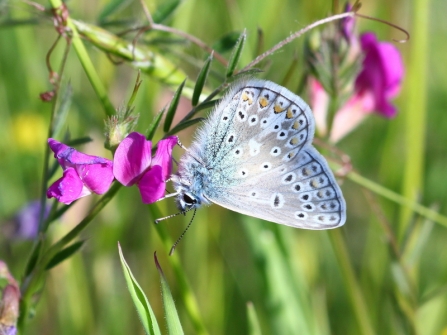Today at Blashford Lakes I saw my first scarce chaser and downy emerald of the year and there were other dragonflies about too with reports of emperor, broad-bodied chaser and hairy dragonfly.
Most of the butterflies that over winter by hibernation as adults are getting scarce now and spring species such as orange-tip are dropping in numbers. there are a few whites around with all three of the common species, but the highlight today was the emergence of blues.
The small meadow near Ivy North hide had six or more male common blue as I went to lock up and at least three brown argus as well, the argus is brown, but an honorary “blue” all the same..


